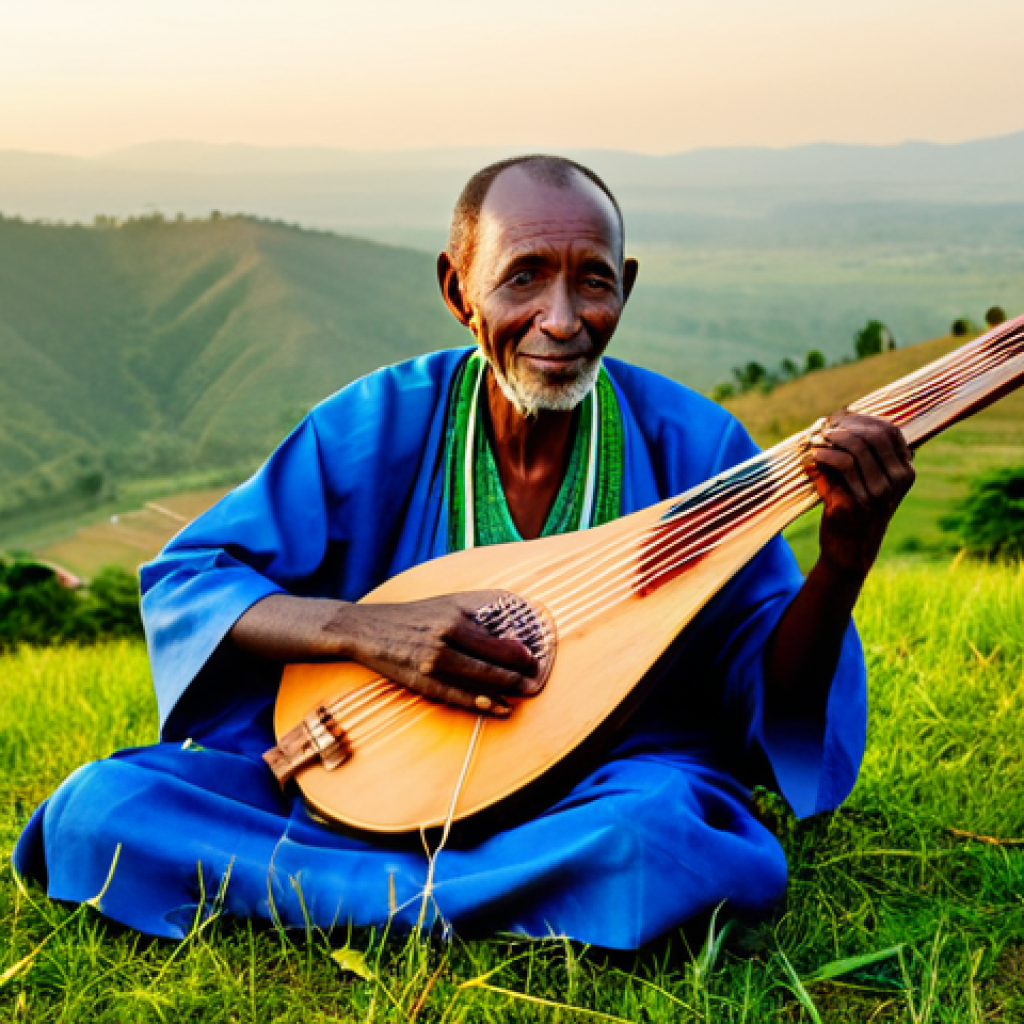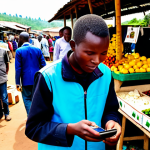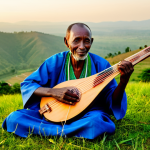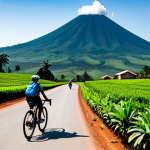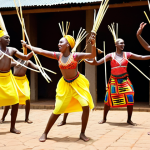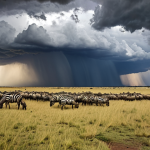Rwanda’s folk music isn’t just a collection of sounds; it’s the very heartbeat of a nation, pulsating with stories, history, and an undeniable spirit that truly touches your soul.
I remember the first time I genuinely listened, not just heard, the intricate melodies of the *Inanga*, a traditional eight-stringed zither, and the rhythmic complexities of the *Ingoma* drums – it was an experience that felt deeply personal, like unlocking a hidden chapter of humanity.
What truly struck me was how these ancient sounds, often telling tales of heroism or daily life, are now finding new life, blending seamlessly with contemporary genres.
This cultural evolution is fascinating; you see young Rwandan artists embracing their roots, yet experimenting with global sounds, proving that tradition isn’t static but a living, breathing entity adapting to a modern world.
This blend not only preserves a precious heritage but propels it onto the global stage, sparking curiosity and appreciation in ways we couldn’t have imagined a decade ago.
It feels like a beautiful testament to resilience and creativity, constantly evolving yet always anchored in its profound identity. Let’s delve deeper into this below.
The Soulful Echoes of Ancient Instruments: More Than Just Sound

Stepping into the world of Rwandan folk music, I often feel like I’m walking through a living museum, where each instrument isn’t merely a tool for sound but a vessel carrying generations of stories and emotions. The deep resonance of the *Inanga*, that beautiful eight-stringed zither, is perhaps the first thing that truly captivated my spirit. I remember sitting in a small, bustling market town, listening to an elderly man play, his fingers dancing across the strings with a grace that seemed almost otherworldly. Each pluck of the string felt like a whispered secret, a tale of ancient kings, lost loves, or the simple joys of daily life in the rolling hills. It’s not just a melody; it’s a narrative, a historical document expressed through vibrating wood and taut strings. The craftsmanship alone is a testament to the dedication, often passed down through families, with each piece of wood carefully selected and shaped to produce its unique, haunting timbre. It’s a sound that genuinely gets under your skin, compelling you to listen more deeply, to understand the layers of history it holds. This instrument, in particular, seems to embody the very essence of Rwandan resilience and artistic expression, remaining a central pillar even as modern sounds sweep across the globe. You can’t help but be moved by the authenticity of it all.
1. The Lyrical Heartbeat of the Inanga
My personal encounters with the *Inanga* have always been profoundly moving, almost spiritual. It’s an instrument that demands your full attention, not with loud, commanding tones, but with a quiet, persistent beauty. The musicians who master it often possess an incredible ability to improvise, weaving new stories into traditional melodies on the spot. I once witnessed a performance where the artist, sensing the mood of the small gathering, began to compose a song about the setting sun over Lake Kivu, and the way the light shimmered on the water felt perfectly mirrored in the gentle strumming. This improvisation isn’t just a technical skill; it’s an emotional connection, a conversation between the musician, the instrument, and the audience, making each performance feel unique and deeply personal. It’s this capacity for intimate storytelling that makes the *Inanga* stand out in a world increasingly dominated by more bombastic sounds. I believe its enduring appeal lies in its authenticity and the way it connects you directly to the soul of Rwanda, a connection I felt instantly and profoundly.
2. The Rhythmic Power of Ingoma Drums
Then there are the *Ingoma* drums, the undeniable pulse of Rwandan life. When you hear them, you don’t just listen; you feel them reverberate through your entire body. I vividly recall the first time I saw a full *Ingoma* ensemble perform, the drummers, typically men, moving with incredible synchronized power and precision. The sheer energy they generated was palpable, almost overwhelming. It wasn’t just noise; it was a complex conversation of rhythms, a language understood and felt by everyone present. Each drum, varying in size, contributes a specific voice to the polyrhythmic tapestry, from the deep, grounding thud of the largest drums to the sharper, more intricate patterns of the smaller ones. These drums are far more than musical instruments; they have historically played crucial roles in ceremonies, royal courts, and community gatherings, marking births, harvests, and even war preparations. The disciplined movements, the intense focus of the drummers, and the sheer volume of sound create an experience that’s truly immersive, almost transporting you to another time. It’s a powerful, primal connection to Rwandan heritage that I found incredibly invigorating and inspiring.
Beyond the Drums: The Narrative Power of Rwandan Song
It’s easy to be swept away by the intricate rhythms and unique instrumentation of Rwandan folk music, but to truly appreciate its depth, you must listen to its stories. The lyrics are where the real magic happens, where the heart of a nation beats in poetic verse. From epic tales of historical figures and heroic battles that shaped the country to intimate descriptions of daily life, love, and loss, Rwandan songs are living archives of cultural memory. I’ve often found myself captivated by the sheer emotional range embedded within these narratives, moving from profound sadness to unbridled joy within a single piece. It’s a powerful reminder that music isn’t just for entertainment; it’s a fundamental way people preserve their identity and pass on wisdom. The storytelling tradition in Rwanda is incredibly rich, and it’s beautifully expressed through the vocalists, whose voices carry not just melodies but the weight of generations of experiences. I always feel like I’m gaining a deeper insight into the Rwandan psyche when I truly engage with the lyrical content, which often requires translation, but even then, the emotional resonance shines through. It’s truly a masterclass in oral tradition.
1. Echoes of Heroism and History in Song
One of the most compelling aspects of Rwandan folk songs is their role as historical chronicles. I remember one evening, sitting by a crackling fire, an elder recounted a story through song about King Kigeli IV Rwabugiri, a powerful figure from the 19th century. The way his voice modulated, rising and falling with the dramatic turns of the narrative, painted such a vivid picture that I felt transported back in time, almost witnessing the events unfold before my eyes. These songs aren’t just dry historical accounts; they imbue the past with emotion, making the heroes and challenges of yesteryear feel incredibly immediate and relevant. They often serve as moral lessons, reminding listeners of the virtues of courage, wisdom, and unity. For someone like me, who loves history, these musical narratives are an invaluable window into a past that isn’t just read about in books but is *felt* and *experienced* through performance. It’s a living history, kept vibrant by the passionate delivery of each storyteller-singer, making it an incredibly potent form of cultural preservation that genuinely moves you.
2. Everyday Life, Universal Emotions: Songs of the People
Beyond the grand narratives, a significant portion of Rwandan folk music delves into the fabric of daily life, offering glimpses into universal human experiences. I’ve heard countless songs about the simple joy of a good harvest, the challenges of working the land, the pangs of unrequited love, or the deep bond within families. These are the songs that truly connect you to the people, making their experiences relatable regardless of your background. One song, sung by a group of women pounding cassava, resonated deeply with me; it spoke of the rhythmic work, the camaraderie, and the hopes for a brighter future, all expressed with such raw honesty. It felt incredibly authentic, a genuine reflection of life’s simple complexities. The emotional honesty in these songs is striking; they don’t shy away from expressing vulnerability or celebrating small victories. It’s this portrayal of human experience, both the mundane and the profound, that makes Rwandan folk music so universally appealing, bridging cultural divides through shared feelings and common struggles. I find it beautifully human and deeply touching.
A Bridge Through Time: Traditional Melodies in Modern Rwanda
What I find particularly fascinating about Rwandan folk music is its incredible resilience and adaptability. In a world saturated with global pop culture, these traditional melodies aren’t just surviving; they’re thriving, finding new relevance and appreciation among younger generations. It’s a testament to the inherent power and beauty of the music itself, proving that genuine artistry transcends trends. I’ve personally seen how traditional ensembles perform at modern festivals alongside contemporary artists, captivating audiences with their authenticity and skill. It’s not about being stuck in the past; it’s about acknowledging and cherishing the foundations upon which modern Rwandan identity is built. Young people, in particular, seem to be rediscovering the richness of their heritage, often learning instruments like the *Inanga* or joining dance troupes that celebrate traditional movements. This cultural renaissance, driven by a renewed sense of pride, ensures that these precious sounds continue to resonate, acting as a vital link between the past, present, and future. It’s a beautiful expression of continuity and evolving identity that I find genuinely inspiring, showing how tradition can be a source of strength rather than a relic.
1. Revitalizing Heritage Through Education and Performance
From my observations, a significant factor in the continued vibrancy of traditional Rwandan music is the dedicated effort to pass it on. I’ve witnessed community centers and schools actively teaching children about traditional instruments and songs, not just as historical artifacts but as living forms of expression. There’s a palpable sense of pride in these initiatives. One program I visited had young students passionately learning to play the *Umuduri*, a single-stringed instrument, their faces alight with concentration and joy. These educational efforts are crucial because they don’t just impart technical skills; they instill a deep appreciation for cultural heritage. Furthermore, there’s a strong emphasis on public performance, from local gatherings to national cultural events, which keeps the music alive and accessible. These performances aren’t merely showcases; they are communal experiences that reinforce a shared identity and foster a sense of belonging. It’s truly heartwarming to see this commitment to preservation, ensuring that the soulful melodies of Rwanda will continue to echo for generations to come, a testament to the power of cultural pride.
2. Traditional Instruments Finding New Audiences
The beauty of Rwandan traditional instruments is that they possess a timeless quality that allows them to appeal to diverse audiences, even those unfamiliar with their origins. I’ve noticed a growing interest from international musicians and enthusiasts who are drawn to the unique timbres and rhythmic possibilities. When I brought my own musician friends to a local performance, they were genuinely enthralled by the complexity of the *Inanga* and the raw energy of the *Ingoma*. It’s a sound that transcends cultural boundaries, speaking directly to the human spirit. There’s a particular allure in the organic, unadorned sound of these instruments in an increasingly digital world. Many people, myself included, are yearning for something authentic and grounding, and these instruments provide just that. This growing appreciation, both locally and globally, is a powerful indicator that traditional music isn’t niche or antiquated; it’s a vital, evolving art form with universal appeal. It makes me genuinely optimistic about the future of this rich musical heritage.
Fusion Frontiers: When Traditional Meets Contemporary Beats
This is where the story of Rwandan music gets really exciting for me – the point where the ancient seamlessly intertwines with the modern, creating something entirely fresh and dynamic. I’ve seen a growing trend among young Rwandan artists who are fearlessly experimenting, taking the foundational elements of folk music and blending them with contemporary genres like Afrobeats, R&B, hip-hop, and even electronic music. It’s not just about adding a drum beat; it’s about thoughtfully integrating the melodic structures, lyrical themes, and instrumental textures of traditional music into new compositions. The results are often breathtaking, producing a sound that is unmistakably Rwandan yet globally appealing. I remember hearing a track by a local artist that featured a beautifully layered *Inanga* melody over a slick, modern beat, and it truly blew me away. It felt innovative, respectful of tradition, and incredibly danceable all at once. This fusion isn’t just a musical trend; it’s a cultural statement, proving that heritage isn’t static but a living, breathing entity capable of constant evolution. It’s a testament to the creativity and open-mindedness of a new generation of artists who are proudly showcasing their roots while embracing global sounds, a blend that I find incredibly inspiring and forward-thinking.
1. The Rhythmic Dialogue: Traditional Percussion in Modern Production
One of the most striking aspects of this fusion, for me, is how traditional Rwandan percussion elements are being expertly woven into modern music production. While electronic drums and programmed beats are prevalent, I’ve noticed artists specifically seeking out *Ingoma* drummers or *Ibyishimo* (shakers) to add an authentic, organic layer to their tracks. It’s not just a sample; it’s often a live recording that brings a raw energy and unique groove that digital sounds simply can’t replicate. This integration adds a depth and complexity to the rhythm section, immediately distinguishing the music from generic global pop. I once spoke to a producer who told me that incorporating these traditional percussive elements was crucial for him, not just for authenticity but because the unique polyrhythms inherent in Rwandan drumming offer a fresh challenge and a distinct sonic signature. This thoughtful incorporation prevents the music from sounding derivative, instead giving it a genuine Rwandan soul while still resonating with a global audience. It makes the music feel grounded and innovative at the same time, a balance that is truly impressive and something I deeply appreciate as a listener.
2. Harmonic Bridges: Inanga Melodies and Modern Chord Progressions
Beyond percussion, the melodic contributions of instruments like the *Inanga* are finding new life within contemporary harmonies. I’ve heard tracks where the haunting, often modal melodies of the *Inanga* are laid over modern chord progressions, creating a beautiful tension and release. It’s a delicate balance; the artists manage to retain the ancient character of the instrument while making it sound fresh and relevant. This blending often results in a unique harmonic texture that differentiates Rwandan fusion music from anything else out there. For instance, a local singer-songwriter I follow frequently incorporates *Inanga* riffs into her pop ballads, giving them an unmistakable Rwandan flavor that pulls at your heartstrings. It showcases how versatile these traditional instruments truly are, capable of enriching modern compositions without losing their intrinsic character. This innovative approach to melody and harmony is what excites me most about the future of Rwandan music; it’s about expanding the soundscape while staying deeply rooted in heritage. It feels like a beautiful conversation between centuries, a dialogue that only enriches both sides, and it’s something I genuinely enjoy experiencing.
| Aspect of Rwandan Music | Traditional Characteristics | Modern Fusion Elements |
|---|---|---|
| Instruments | Inanga (zither), Ingoma (drums), Umuduri (bow), Ibyishimo (shakers) | Electric guitars, synthesizers, drum machines, bass guitars, computers |
| Rhythm & Beat | Complex polyrhythms, call-and-response patterns, acoustic resonance | Afrobeats, Hip-Hop grooves, R&B syncopation, electronic dance beats |
| Lyrical Themes | Historical epics, oral traditions, daily life, moral teachings, proverbs | Personal narratives, social commentary, love songs, global issues, self-expression |
| Performance Context | Ceremonies, royal courts, community gatherings, storytelling sessions | Concerts, music festivals, digital streaming, clubs, radio airplay |
| Musical Structure | Often cyclical, improvisational, based on vocal lines and instrument interplay | Verse-chorus structure, bridges, pre-chorus, breakdowns, more defined song forms |
Global Rhythms, Rwandan Heart: Exporting a Unique Sound
It’s incredibly gratifying to witness Rwandan music gaining traction on the global stage. What was once primarily a local treasure is now captivating audiences far beyond its borders, and honestly, it’s about time. This growing international recognition isn’t just a fleeting trend; it’s a testament to the universal appeal of its authentic sound and deeply moving narratives. I’ve personally seen how tracks by Rwandan artists are appearing on international playlists, reaching listeners who might never have encountered an *Inanga* or *Ingoma* before. This export of cultural expression is vital; it offers a nuanced perspective on Rwanda that goes beyond headlines, presenting a vibrant, creative nation through its art. The unique blend of traditional elements with contemporary production makes it accessible to a wider audience without sacrificing its identity. It’s a truly exciting development, fostering cross-cultural dialogue and appreciation in a way that very few other things can. For me, it feels like a genuine breakthrough, a moment where the world is truly starting to listen and appreciate the rich tapestry of Rwandan artistry, something I’ve long felt was overdue.
1. Breaking Barriers Through Digital Platforms
The rise of digital streaming platforms has undeniably been a game-changer for Rwandan artists seeking global reach. I’ve observed firsthand how independent musicians, often without major label backing, are leveraging platforms like Spotify, Apple Music, and YouTube to share their music with the world. This accessibility has democratized the music industry, allowing unique sounds to bypass traditional gatekeepers and find their own audiences. It’s not uncommon to see a Rwandan music video garnering hundreds of thousands, if not millions, of views from listeners across continents. This digital presence is absolutely crucial because it breaks down geographical barriers, making it possible for someone in London or New York to discover and fall in love with a track produced in Kigali. I genuinely believe that this digital revolution is empowering Rwandan artists to control their narrative and share their stories directly, fostering a direct connection with fans globally. It’s an incredibly exciting development that promises even greater international exposure for these captivating sounds, and it’s something I actively follow and support.
2. Collaborations: A Path to Wider Audiences
Another powerful avenue for global reach I’ve keenly observed is the increasing number of collaborations between Rwandan artists and international musicians. These partnerships are a brilliant way to introduce Rwandan sounds to audiences who might primarily listen to other genres. When an internationally renowned artist features a Rwandan vocalist or incorporates traditional instrumentation, it instantly broadens the appeal and sparks curiosity. I remember one specific collaboration where a popular European DJ incorporated an *Inanga* sample into one of his tracks, and the comments section was filled with people asking about the “beautiful, unique instrument.” This kind of cross-pollination is mutually beneficial; it introduces Rwandan artists to new fanbases while enriching the global music scene with fresh, diverse sounds. These collaborations aren’t just about making hits; they’re about building bridges, fostering cultural exchange, and showcasing the versatility and richness of Rwandan music. From my perspective, these artistic partnerships are crucial for continued growth and are a beautiful way to share the unique voice of Rwanda with the entire world, something I find incredibly inspiring to witness.
The Unseen Architects: Guardians of Musical Heritage
While we celebrate the artists on stage and the captivating sounds they produce, it’s crucial to acknowledge the unsung heroes who meticulously safeguard Rwanda’s musical heritage. These are the elders, the instrument makers, the historians, and the community leaders who tirelessly work behind the scenes to preserve and transmit this invaluable cultural wealth. I’ve been profoundly moved by their dedication, often driven by a deep love for their traditions and a fierce commitment to ensuring that future generations remain connected to their roots. Without their painstaking efforts – documenting songs, teaching younger apprentices, maintaining ancient techniques for crafting instruments – much of this rich heritage could easily fade. It’s a continuous, often challenging, labor of love that involves immense patience and profound respect for the past. Their quiet but powerful influence ensures that the foundation of Rwandan music remains strong, even as the sound evolves. I genuinely believe that appreciating Rwandan music fully means recognizing the incredible work of these guardians, who are the true architects of its enduring legacy. Their efforts resonate deeply with me, showcasing a true commitment to cultural continuity.
1. The Wisdom Keepers: Elders and Oral Tradition
In Rwandan society, the elders are truly the living libraries of musical tradition, embodying centuries of knowledge within their memories. I’ve had the privilege of sitting with some of these elders, listening to their recollections of songs, performance styles, and the historical contexts behind them. Their stories are a treasure trove, often passed down through generations strictly by word of mouth. It’s a humbling experience to realize that an entire lineage of musical knowledge rests within their minds. They are not just recounting facts; they are sharing wisdom, life lessons, and cultural nuances embedded within the musical forms. Their role is invaluable in ensuring the authenticity and integrity of traditional performances. Without their guidance and direct transmission of knowledge, many of the subtle complexities and emotional depths of the music could be lost forever. Their unwavering dedication to keeping these oral traditions alive is a powerful reminder of the importance of human connection in cultural preservation, something I find profoundly moving and essential to the continued vibrancy of Rwandan music. Their very presence feels like a direct link to the past, a connection that is truly irreplaceable.
2. The Craft Masters: Instrument Makers and Their Artistry
Equally vital are the skilled artisans who dedicate their lives to crafting the traditional instruments that produce these captivating sounds. I’ve visited workshops where *Inanga* and *Ingoma* are meticulously fashioned by hand, using techniques passed down over generations. The precision, the patience, and the profound understanding of materials involved in this process are truly awe-inspiring. Each curve, each joint, each skin stretched across a drum frame is executed with an artistry that reflects centuries of innovation and refinement. These instrument makers are not just craftsmen; they are artists and engineers, intimately understanding how wood, skin, and string interact to create specific tones and resonances. Their work is a labor of love, ensuring that musicians have access to instruments that are not only playable but also imbued with a deep cultural significance. Without their expertise, the authentic sound of Rwandan folk music would simply cease to exist. From my perspective, these artisans are as much a part of the musical heritage as the performers themselves, their silent contributions forming the very backbone of this rich tradition. Witnessing their dedication truly underscores the depth of cultural commitment in Rwanda.
More Than Music: Its Role in Healing and National Identity
To truly grasp the profound significance of Rwandan folk music, you have to look beyond its artistic merit and understand its deep-seated role in the nation’s healing journey and the forging of its modern identity. Having spent time there, I’ve felt firsthand how music serves as a powerful medium for remembrance, reconciliation, and ultimately, hope. It’s not just background noise; it’s an active participant in the ongoing process of national unity and resilience, particularly in the wake of the 1994 genocide. Songs often carry narratives of loss and suffering, but just as frequently, they convey messages of overcoming adversity, rebuilding, and looking towards a brighter future. I’ve witnessed how communal singing and drumming create a collective space for expression, allowing emotions to be shared and processed in a way that words alone sometimes cannot. This isn’t just about entertainment; it’s about catharsis, communal bonding, and a reaffirmation of shared values. The music acts as a powerful adhesive, binding people together and reminding them of their common heritage and their collective strength. It’s a testament to the transformative power of art, a force that I find incredibly moving and essential to understanding contemporary Rwanda. It truly transcends mere melody and rhythm.
1. Music as a Vehicle for Remembrance and Healing
I’ve personally witnessed the profound role music plays in remembrance and healing within Rwandan communities. During memorial events, traditional songs are often performed, their poignant melodies and lyrics acting as a collective expression of grief and a powerful reminder of history. It’s not about dwelling in sadness, but about acknowledging the past to move forward. These songs provide a safe space for emotions, allowing individuals to connect with shared experiences of loss while also finding solace in communal solidarity. One particularly moving experience was attending a community gathering where a choir performed a traditional song that spoke of resilience in the face of immense adversity. The raw emotion in their voices, coupled with the familiar, comforting melodies, created an atmosphere of deep empathy and shared strength. It felt like a truly therapeutic experience, a way for the community to process collective trauma and reaffirm their unity. This capacity of music to heal, to foster remembrance without being consumed by it, is something I find incredibly powerful and unique to the Rwandan context. It’s a testament to the enduring human spirit and the transformative power of art.
2. Forging a Shared Future: Music and National Unity
Beyond healing, Rwandan folk music is a vital thread in the fabric of national unity. It serves as a constant reminder of a shared cultural heritage that transcends ethnic lines, promoting a collective identity as Rwandans. I’ve often seen how traditional performances bring together people from all walks of life, transcending age or background. The communal nature of drumming and dancing fosters a sense of belonging and solidarity, reinforcing the idea that everyone is part of a larger whole. In schools and public events, learning and performing these traditional songs and dances is often emphasized as a way to instill pride in Rwandan culture and to build a cohesive national identity for the younger generation. It’s not just about preserving the past; it’s about actively shaping a future built on shared values and mutual respect. This intentional use of music as a tool for unity is something I find incredibly inspiring. It demonstrates how art can be a powerful force for social cohesion, helping a nation move forward with a unified spirit, embracing its rich past while building a stronger future together. It’s a beautiful, living embodiment of unity.
Concluding Thoughts
Stepping back from this journey through Rwandan folk music, what truly resonates with me is its incredible, living vibrancy. It’s far more than just melodies and rhythms; it’s the very pulse of a nation, a testament to its resilience, creativity, and profound spirit. From the ancient, soulful whispers of the *Inanga* to the thunderous, unifying beat of the *Ingoma*, and now to the thrilling blends of traditional and contemporary sounds, this music tells a story that is both deeply personal and universally human. It’s a powerful reminder that art, especially music, connects us across time and cultures, offering a unique window into the heart of a people. I truly believe that embracing these sounds enriches not just our playlists, but our understanding of the world, leaving an indelible mark on our souls.
Useful Information to Know
1. Experience Live Music: In Kigali, look for cultural centers like the Kigali Cultural Village or check with local tourism offices for schedules of traditional performances. Many upscale hotels also host cultural evenings with live bands. Keep an eye out for national festivals; they often feature incredible traditional ensembles.
2. Finding Authentic Instruments: If you’re looking to purchase an *Inanga* or *Ingoma*, seek out reputable artisan workshops rather than general souvenir shops. Your local guide can often connect you with master craftsmen who ensure the instruments are genuinely crafted and culturally significant.
3. Online Resources: Dive deeper into Rwandan music from anywhere! Platforms like YouTube, Spotify, and Bandcamp host a growing number of Rwandan artists. Search for terms like “Rwandan traditional music,” “Inanga music,” or specific fusion artists to discover a rich library of sounds.
4. Cultural Etiquette at Performances: When attending traditional performances, remember that these are often deeply rooted in history and spirituality. Observe respectfully, appreciate the intricate movements and sounds, and avoid disruptive photography during solemn moments. Your genuine engagement is always appreciated.
5. Contemporary Rwandan Artists to Explore: Don’t limit yourself to traditional sounds. Many young Rwandan artists are brilliantly blending folk elements with Afrobeats, R&B, and hip-hop. Explore artists like Meddy, Bruce Melodie, and The Ben, who often infuse traditional vibes into their chart-topping tracks, giving you a taste of the modern Rwandan soundscape.
Key Takeaways
Rwandan folk music is a dynamic, evolving art form that serves as a profound cultural backbone. It seamlessly weaves together ancient traditions, particularly through instruments like the *Inanga* and *Ingoma*, with contemporary sounds, creating a unique and globally appealing fusion. This music is not merely for entertainment; it acts as a powerful vehicle for preserving history, fostering national identity, and facilitating communal healing and reconciliation. The dedication of elders and instrument makers is vital in safeguarding this rich heritage, ensuring its continued relevance and vibrant presence on the world stage, reaching new audiences through digital platforms and international collaborations.
Frequently Asked Questions (FAQ) 📖
Q: How exactly are traditional Rwandan instruments and melodies being integrated into modern music today, moving beyond just hearing them in a historical context?
A: This is where it gets really exciting! From what I’ve seen and heard, it’s not about forcing old and new together. Instead, you have incredible artists who might sample the distinct, almost hypnotic plucks of the Inanga into a vibrant Afrobeats track, or layer modern, soulful vocals over the deep, grounding rhythms of the Ingoma.
I’ve even come across younger DJs who seamlessly blend traditional call-and-response chants into electronic dance music, creating something absolutely unique that makes you want to move but also listen closely.
It feels less like a strict “fusion” and more like an organic evolution, where the ancient roots nourish new branches, keeping the sound incredibly authentic yet undeniably fresh.
It’s truly a respectful reinterpretation rather than an abandonment of the past.
Q: Beyond just the sound, what larger cultural impact do you think this evolution of Rwandan folk music has, particularly on a global scale?
A: Oh, it’s monumental, truly. For me, it’s about rewriting narratives and broadening perspectives. For so long, when people outside of Rwanda thought of the country, certain painful historical images might have dominated their minds.
But when Rwandan artists, through their music, showcase this vibrant, living heritage – full of intricate stories, incredible resilience, and an undeniable spirit – it completely transforms that perception.
It introduces a richness, a depth, and a hopeful energy that many might not have known existed. It sparks genuine curiosity, leading people to explore more than just the headlines.
I’ve seen it firsthand; people who once only knew about the past are now eager to learn about the present and future of this incredibly creative nation, all because a compelling melody caught their ear.
It’s an act of beautiful cultural diplomacy, pure and simple.
Q: Given this rapid evolution and blend with global sounds, how do you think Rwandan artists manage to maintain the authentic “heartbeat” of their tradition while embracing modernity?
A: That’s the million-dollar question, isn’t it? And honestly, I think it comes down to a profound respect for their heritage, almost an innate sense of responsibility.
When I speak with these artists, there’s a deep understanding that they are not just creating music; they are carrying stories, memories, and the very soul of their ancestors.
They might experiment with a synth, or a global drum machine, but the lyrical themes, the rhythmic undercurrents, or even just the spirit of the performance, remain deeply rooted in Rwandan identity.
It’s like building a modern house on a very ancient, strong foundation. They aren’t abandoning their roots; they’re simply finding new ways to express them, ensuring that the essence – that undeniable, soulful umwuka (spirit) – is never lost, no matter how wide their musical reach becomes.
It’s a powerful testament to how identity can be both fluid and deeply anchored at the same time.
📚 References
Wikipedia Encyclopedia
구글 검색 결과
구글 검색 결과
구글 검색 결과
구글 검색 결과
구글 검색 결과
